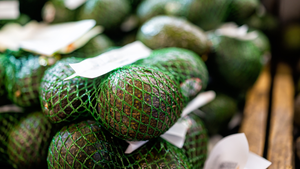A Name Changer for MeatA Name Changer for Meat
The NPB and the NCBA unveiled its proposed changes to the fresh meat nomenclature and labeling for retail at the American Meat Institute’s 2013 Annual Meat Conference.
January 1, 2018
Update: Simplified names have received approval. After extensive consumer research, the National Pork Board (NPB) and the National Cattlemen’s Beef Association (NCBA) unveiled its proposed changes to the fresh meat nomenclature and labeling for retail at the American Meat Institute’s 2013 Annual Meat Conference in February in Nashville, Tenn. The two-part seminar, Demystifying the Meat Case for Today’s Confused Consumer, outlined the results of multi-year research that included focus groups and in-store eye-tracking studies, the new common names for beef and pork cuts and the next steps for retailers. The research, completed in conjunction with Midan Marketing, an agency focused in the meat channel, uncovered a disconnect between the current Uniform Retail Meat Identification Standards (URMIS) nomenclature and consumers’ knowledge of the cuts and their uses. “For a long time we as an industry thought if we kept it consistent the consumers would pick it up, but every time we sit down with consumers they tell us that it isn’t working,” says Patrick Fleming, director of retail marketing for the Des Moines, Iowa-based NPB. “The changes are about simplifying the shopping experience. Consumers do not need to know if they are buying an overblade or underblade; they just want to know how the eating experience is going to be, so we came up with memorable names to represent those experiences,” he adds. This will be the first time the Uniform Retail Meat Identification Standards (URMIS) nomenclature has been significantly updated since it was put into play in 1973. Michael Uetz, principal at Midan Marketing, describes the new system as “intuitive.” The new labels feature a consumer-friendly name—which will overlap across beef and pork—the cut’s characteristics and a suggested preparation method. “There are a lot of cuts in the case that people do not know what to do with, and if consumers don’t know how to cook something, they won’t buy it. Retailers need to move more than just pork loins,” says Uetz. The consumer research showed that some names, such as butt and cushion, were viewed negatively by consumers and therefore devaluing the cuts. Fleming says some retailers are already playing with the new nomenclature for pork and have had success. Many of the common names, such as as porterhouse and rib-eye, will also help bridge the connection between foodservice/restaurant menu items and the retail meat case. Both the checkoff programs expect to see an impact on sales. “Our goal with the program, because it is consumer focused, is to have an immediate positive impact on sales,” says Trevor Amen, director of market intelligence for the NCBA, based in Denver. “We are aiming to do this by creating less confusion and increasing consumer confidence by making them more comfortable. “From a competitive advantage standpoint for retailers, according to our research 77% of consumers said they would seek out a store that was offering this new labeling and nomenclature. There is a very high interest from consumers,” Amen adds. Fleming also predicts a substantial impact on the pork segment, especially in changing the value of the pork loin. “We won’t just be a pork chop. There will be differentiation between the cuts,” he says. This is the beginning of an ongoing process, industry observers agree. “There is a lot more work to be done. The plan is to update the system as consumer trends evolve and technology changes. We know that in 20 years the industry will look very different than it does today,” says Fleming. Amen adds, “We have had a very diverse group working on this project over the last two years that involved beef, pork, outside agencies, consultants, the USDA, scale companies—a lot of folks with many years of experience with the URMIS system. We have fully addressed a lot of concerns along the way, including bouncing ideas with actual retail operators. We feel very comfortable with the system we developed. Overall, we think it will be a positive change.” Retailers can find more information about the new URMIS nomenclature system on www.MeatTrack.com.
About the Author
You May Also Like




